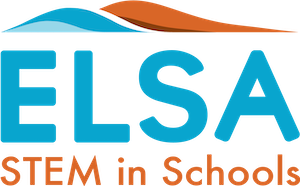CURRICULUM OUTCOMES
Foundation year (kindergarten)
The ELSA: STEM in Schools program engages students in activities that cover the following Australian Curriculum outcomes for Foundation year (kindergarten).
UNIT 1 [Term 2]: Spatial Ordering
- Name, represent and order numbers including zero to at least 20, using physical and virtual materials and numerals (AC9MFN01).
- Sort, name and create familiar shapes; recognise and describe familiar shapes within objects in the environment, giving reasons (AC9MFSP01).
- Quantify and compare collections to at least 20 using counting and explain or demonstrate reasoning (AC9MFN03).
- Observe external features of plants and animals and describe ways they can be grouped based on these features (AC9SFU01).
- Represent data as objects, pictures and symbols (AC9TDIFK02).
UNIT 2 [Term 2]: Location and Transformation
- Describe the position and location of themselves and objects in relation to other people and objects within a familiar space (AC9MFSP02).
- Represent data as objects, pictures and symbols (AC9TDIFK02).
- Give and follow directions to move people and objects to different locations within a space (AC9M1SP02).
UNIT 3 [Term 3]: Computational Thinking: Abstraction
- Sort, name and create familiar shapes; recognise and describe familiar shapes within objects in the environment, giving reasons (AC9MFSP01).
- Collect, sort and compare data represented by objects and images in response to given investigative questions that relate to familiar situations (AC9MFST01).
- Observe external features of plants and animals and describe ways they can be grouped based on these features (AC9SFU01).
- Represent data as objects, pictures and symbols (AC9TDIFK02).
UNIT 4 [Term 3]: Patterns
- Recognise and name the number of objects within a collection up to 5 using subitising (AC9MFN02).
- Quantify and compare collections to at least 20 using counting and explain or demonstrate reasoning (AC9MFN03).
- Partition and combine collections up to 10 using part-part-whole relationships and subitising to recognise and name the parts (AC9MFN04).
- Recognise, copy and continue repeating patterns represented in different ways (AC9MFA01).
- Observe external features of plants and animals and describe ways they can be grouped based on these features (AC9SFU01).
Year one
The ELSA: STEM in Schools program engages students in activities that cover the following Australian Curriculum outcomes for Year 1.
UNIT 1 [Term 2]: Decoding data and information
- Represent data as pictures, symbols, numbers and words (AC9TDI2K02).
- Make, compare and classify familiar shapes; recognise familiar shapes and objects in the environment, identifying the similarities and differences between them (AC9M1SP01).
- Sort and order data and information and represent patterns, including with provided tables and visual or physical models (AC9S1I04).
UNIT 2 [Term 2]: Spatial measurement
- Compare directly and indirectly and order objects and events using attributes of length, mass, capacity and duration, communicating reasoning (AC9M1M01).
- Measure the length of shapes and objects using informal units, recognising that units need to be uniform and used end-to-end (AC9M1M02).
- Make and record observations, including informal measurements, using digital tools as appropriate (AC9S1I03).
- Compare observations with predictions and others’ observations, consider if investigations are fair and identify further questions with guidance (AC9S1I05).
- Use the basic features of common digital tools to create, locate and communicate content (AC9TDI2P04).
UNIT 3 [Term 3]: Sequencing and decision-making
- Follow and describe algorithms involving a sequence of steps, branching (decisions) and iteration (repetition) (AC9TDI2P02).
- Represent data as pictures, symbols, numbers and words (AC9TDI2K02).
- Sort and order data and information and represent patterns, including with provided tables and visual or physical models (AC9S1I04).
- Give and follow directions to move people and objects to different locations within a space (AC9M1SP02).
UNIT 4 [Term 3]: Mechanical reasoning/simple machines
- Write and create texts to communicate observations, findings and ideas, using everyday and scientific vocabulary (AC9S1106).
- Pose questions to explore observed simple patterns and relationships and make predictions based on experiences (AC9S1101).
- Describe how people use science in their daily lives, including using patterns to make scientific predictions (AC9S1H01).
Year two
The ELSA: STEM in Schools program engages students in activities that cover the following Australian Curriculum outcomes for Year 2.
UNIT 1 [Term 2]: Debugging
- Compare observations with predictions and others’ observations, consider if investigations are fair and identify further questions with guidance (AC9S2I05).
- Represent data as pictures, symbols, numbers and words (AC9TDI2K02).
- Follow and describe algorithms involving a sequence of steps, branching (decisions) and iteration (repetition) (AC9TDI2P02).
- Use the basic features of common digital tools to create, locate and communicate content (AC9TDI2P04).
UNIT 2 [Term 2]: Spatial Transformations – Linear movements and rotations
- Locate positions in two-dimensional representations of a familiar space; move positions by following directions and pathways (AC9M2SP02).
- Recognise and read the time represented on an analogue clock to the hour, half-hour and quarter-hour (AC9M2M04).
- Identify, describe and demonstrate quarter, half, three-quarter and full measures of turn in everyday situations (AC9M2M05).
- Follow and describe algorithms involving a sequence of steps, branching (decisions) and iteration (repetition) (AC9TDI2P02).
UNIT 3 [Term 3]: Graphic Languages
- Create different graphical representations of data using software where appropriate; compare the different representations, identify and describe common and distinctive features in response to questions (AC9M2ST02).
- Explore different actions to make sounds and how to make a variety of sounds, and recognise that sound energy causes objects to vibrate (AC9S2U02).
- Describe how people use science in their daily lives, including using patterns to make scientific predictions (AC9S2H01).
- Pose questions to explore observed simple patterns and relationships and make predictions based on experiences (AC9S2I01).
UNIT 4 [Term 3]: Fractions
- Identify common uses and represent halves, quarters and eighths in relation to shapes, objects and events (AC9M2M02).
- Explore different actions to make sounds and how to make a variety of sounds, and recognise that sound energy causes objects to vibrate (AC9S2U02).
- Represent data as pictures, symbols, numbers and words (AC9TDI2K02).
- Use materials, components, tools, equipment and techniques to safely make designed solutions (AC9TDE2P02).
